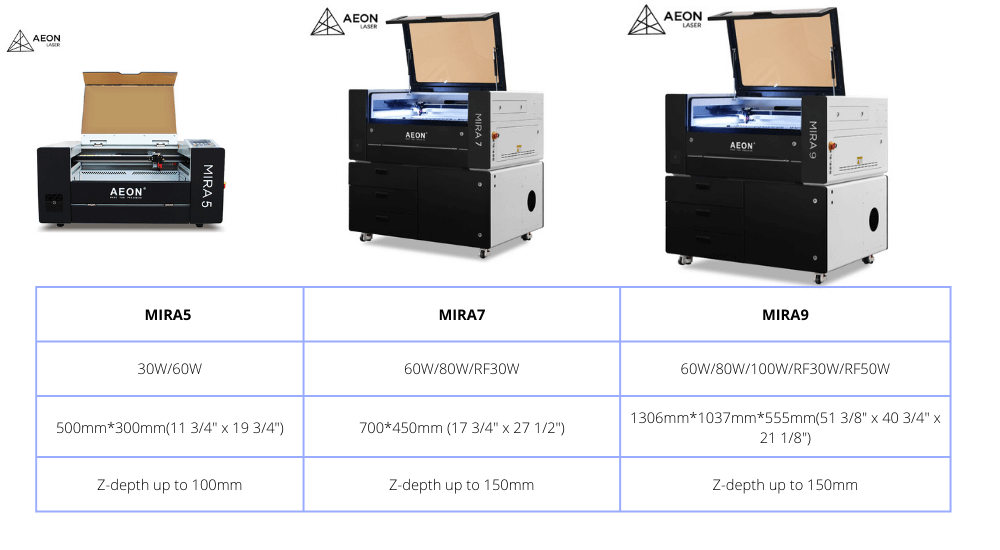CO2 lasers, fiber lasers, and diode lasers are all types of lasers that are commonly used in a variety of applications, including cutting, welding, marking, and engraving. While all of these lasers produce a focused beam of light that can be used to cut, weld, or mark materials, there are some key differences between them.
The difference between Co2 Laser, Fiber Laser, Diode lasers – Co2 Laser
CO2 laser cutter engraver is a type of machine that uses a laser beam to cut or engrave a wide range of materials, including wood, acrylic, plastic, and metal. The laser beam is generated by a gas mixture of carbon dioxide, nitrogen, and other gases, which is pumped into a resonator where it is amplified and focused into a high-intensity beam. The beam is then directed onto the material being cut or engraved, where it vaporizes or melts the material, creating the desired shape or design. CO2 laser cutter engravers are commonly used in a variety of industries, including manufacturing, sign making, and prototyping. Co2 Lasers are known for their high precision and ability to cut or engrave a wide range of materials, but are also large and expensive, and require frequent maintenance and adjustment to keep them operating at peak performance.
Aeonlaser.net offers kinds of All in One Co2 Laser cutter engraver machines in high quality and fast engraving speed up to 2000mm/s.
Best selling Desktop MIRA Co2 Laser cutter engraver Machine has 3 type mode MIRA 5, MIRA 7 Laser, MIRA 9 Laser.
MIRA is a Desktp Laser engraver cutter machine, MIRA 5 is an excellent option for those who are new to a hobby, crafting, or just want to try it out without extensive experience.
If you’re looking to start a part-time business or grow an existing full-time enterprise, MIRA 7 & MIRA 9 is absolutely crucial.

Newest Nova Super - Nova Super10, Nova Super14, Nova Super16.
The Super NOVA combines the best of both worlds with its innovative dual laser source design.
Finally, a laser that combines the ultra high resolution and speeds customary of metal RF laser tubes, with the superb cutting performance that only a glass DC laser tube can provide.
Matched with hybrid stepper motors and a newly designed enclosed rail system, the Super NOVA is ready to take your laser engraving and cutting business to the next level.
The difference between Co2 Laser, Fiber Laser, Diode lasers – Fiber Laser
A fiber laser is a type of laser that uses a fiber optic cable as the active medium, which is doped with rare earth elements such as ytterbium or neodymium. The fiber optic cable is placed in a resonator where it is pumped with light from a diode laser, which excites the rare earth elements and generates the laser beam. The beam is then directed onto the material being processed, where it cuts, engraves, or marks the surface, depending on the specific application.
Fiber lasers are known for their compact size, high efficiency, and low maintenance requirements. They are commonly used for marking and engraving applications, as well as for cutting thin materials. They are also widely used in a variety of industries, including manufacturing, medical, and defense. Compared to other types of lasers, fiber lasers are relatively inexpensive and require little maintenance, making them a popular choice for many applications.
The difference between Co2 Laser, Fiber Laser, Diode lasers - Diode laser
A diode laser, also known as a semiconductor laser, is a type of laser that uses a semiconductor material as the active medium. The semiconductor is typically made of gallium arsenide or indium gallium arsenide, and is pumped with electrical current, which excites the electrons in the semiconductor and generates the laser beam. The beam is then directed onto the material being processed, where it cuts, engraves, or marks the surface, depending on the specific application.
Diode lasers are known for their compact size, low cost, and ease of use. They are commonly used in portable devices and handheld tools, such as laser pointers or laser pens. They are also widely used in a variety of other applications, including telecommunications, medical treatment, and military targeting. Compared to other types of lasers, diode lasers are not as powerful, but they are the most portable and cost-effective option.
Overall, the choice of laser type depends on the specific application and material being processed. CO2 lasers are ideal for non-metallic materials, fiber lasers for metallic materials, and diode lasers for compact and portable applications.
Post time: Feb-18-2023